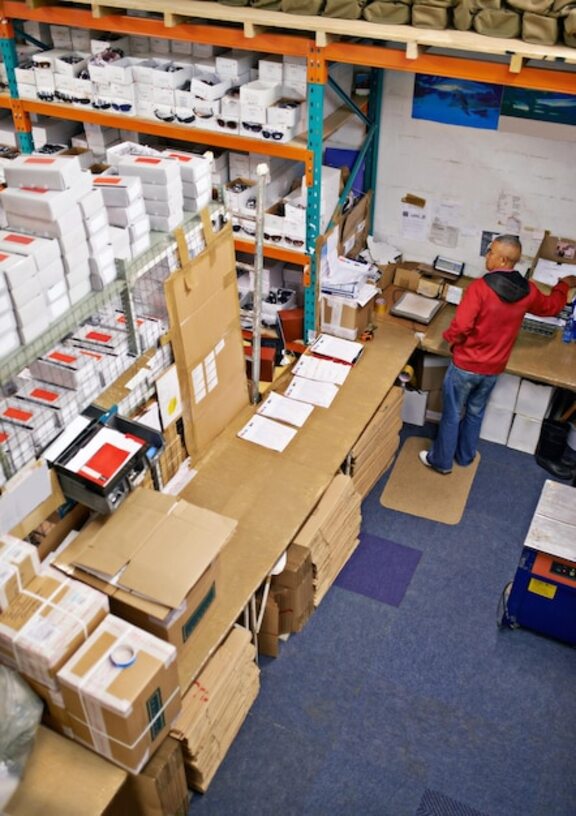Tips for creating an effective inventory before moving.

Creating an effective inventory before moving is essential to ensure that your relocation process is smooth and trouble-free. A good inventory will not only help you organize your belongings, but it will also allow you to keep an accurate record of what you have and what you need. In this article, you will discover practical and effective tips for creating an inventory that will simplify your move and save you headaches in the future.
1. The importance of a detailed inventory: why is it essential?
The importance of a detailed inventory lies in its ability to provide clarity and organization during the moving process. By creating a comprehensive inventory, you can identify each of your items, from the smallest to the largest, which allows you to have a clear view of what you own. This clarity not only facilitates the logistics of packing and loading into the moving vehicle but also helps prevent losses or misunderstandings about which belongings are being moved. Without an adequate inventory, it is easy to leave behind important items or even lose them during the move.
Additionally, having a detailed inventory is essential for any eventuality that may arise before, during, or after the move. In case of damage or loss, having an accurate list will allow you to file claims with your insurance company more effectively. It will also help you determine if you need to purchase additional items for your new home or if you can do without some elements. In summary, a well-prepared inventory not only optimizes the moving process but also ensures that you are fully prepared to begin this new stage without setbacks.
2. Useful tools for creating your inventory: applications and traditional methods
To create an effective inventory, it is essential to have the right tools that fit your needs and preferences. In the digital age, there are numerous applications specifically designed to help you manage your belongings. Applications like Sortly, StuffKeeper, or Encircle allow you to take photographs of your items, organize them by categories, and keep track of their value. These tools offer the advantage of accessing your inventory from any device and easily sharing it with friends or family, which can be helpful in case of loss or damage during a move. Additionally, many of these applications include reminders to track the status of your belongings over time.
However, not everyone prefers digital solutions. For those who opt for more traditional methods, carrying a notebook or using spreadsheets can be equally effective. Simply write down each item along with its description and condition in a list organized by rooms. You can add notes about the sentimental or financial value of certain objects, which will help you prioritize what to take with you and what could be sold or donated. This manual approach also allows for a more tangible connection with your belongings, facilitating the reflective process of what you really need to keep when moving.
3. Classification by categories: furniture, appliances, and personal items
Categorizing your belongings is a key strategy for creating an effective inventory. Starting with the furniture will give you a clear view of the larger and heavier items you will need to move. Take note of each piece, including details such as the material, size, and any special features. This will not only facilitate the logistics of transportation but also help you decide whether you want to keep each piece of furniture or if it's time to part with some. Additionally, by categorizing your furniture, you will be able to better plan the layout in your new home.
Appliances constitute another crucial category in your inventory. From the refrigerator to the washing machine, each device must be carefully recorded along with its current condition and technical specifications. Also consider how these items will be transported; some may require special care or prior disassemblies. By including this information in your inventory, you can ensure that everything arrives at its destination in perfect condition and you will be ready to install them without complications once you arrive at your new space.
Finally, don't forget personal items, which range from clothing and accessories to sentimental objects or important documents. This category can be especially varied and requires meticulous attention to ensure that you don't leave anything behind. By making a detailed list of your personal belongings, you can identify what you need to take with you immediately and what can go in separate boxes for later transport. This organization will provide you with peace of mind during the moving process and allow you to easily access essentials once you are settled in your new home.
4. How to label boxes for easy identification during the move
One of the keys to an organized move is to label your boxes correctly. By doing so, you will not only make it easier to identify their contents, but you will also save time when unpacking. It is advisable to use large, legible labels where you can write the name of the room each box belongs to, as well as a brief description of what it contains. For example, instead of writing "books," you could specify "cookbooks" or "novels." This will allow you to quickly find what you need without having to open multiple boxes.
Also, consider implementing a color-coding system for your labels. Assign a specific color to each room: blue for the kitchen, green for the living room, and yellow for the bedrooms. This way, when you arrive at your new home, you can visually identify which box belongs to which room simply by its color. Don't forget to also create a digital or paper inventory where you record the contents of each box along with its corresponding label; this will help you maintain a more accurate control and will be useful if any box gets lost during the move.
5. Photographic record: a visual strategy for your belongings
The photographic record has become an invaluable tool for those in the process of moving. By taking pictures of your belongings, you can create a visual inventory that not only documents what you own but also facilitates the identification and organization of each item. This approach is especially useful for fragile or valuable objects, as it provides visual proof of their condition before the move. Additionally, having images can be beneficial in case of losses or damages during the moving process, as you will have clear evidence for any claims.
To optimize your photographic inventory, consider grouping your belongings by categories or rooms. For example, take photos of the living room furniture together and then move on to the kitchen or bedroom. Be sure to include details such as labels or additional notes about the condition of the items. This will not only help you maintain more effective control during the move, but it will also make it easier when you arrive at your new home and need to locate everything quickly. Ultimately, a photographic inventory is a visual strategy that complements your written inventory and can make all the difference in an organized and stress-free move.
6. Time management: when to start taking your inventory before moving.
For an effective inventory, time is a crucial factor that should not be underestimated. Ideally, you should start taking your inventory at least three weeks before the scheduled moving date. This period will allow you to have a clear view of all your belongings, classify them properly, and decide what to take, sell, or donate. By starting early, you give yourself the opportunity to address each area of your home without rushing, which reduces the risk of forgetting important items or leaving tasks until the last minute. Additionally, by starting early, you can adjust and review your list as you progress through the packing process. This will allow you to make corrections if you find items you hadn't initially considered or decide whether you want to acquire additional materials to properly pack your more fragile belongings. Remember that a well-organized inventory will not only make your move easier but also help you maintain clearer control over your possessions in your new home, ensuring that nothing is left behind.
Finally, keep in mind that each move is different and there may be external factors such as the logistics of the transfer or weather conditions that will influence your planning. Therefore, maintaining flexibility in your timing and being prepared to adjust your schedule if necessary will be key to ensuring a positive experience throughout the moving process.
7. Final tips for keeping your inventory updated and organized
To keep your inventory updated and organized over time, it is crucial to establish a system for periodic review. Spend a few minutes each month checking and updating your list, especially after acquiring new items or getting rid of others. This will not only allow you to keep a more accurate record of your belongings but will also facilitate the process in case of future moves or changes in your home. Consider using apps or digital tools that help you manage this inventory, as they often offer reminders and options to categorize your items more effectively.
Additionally, make sure to clearly label boxes and furniture during the move. By doing so, you will have a visual reference that will make it much easier to identify what belongs to each category in your inventory. Include details such as the specific contents and the room where each box should be placed in your new home. This practice will not only make unpacking faster and less stressful, but it will also help keep your space organized from day one. Remember that an effective inventory is an ongoing effort; keeping it up to date is key to fully enjoying your new home without losing track of your belongings.



